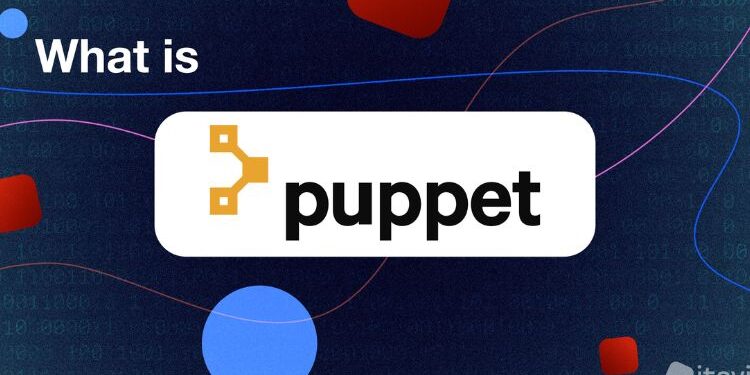Imagine an orchestra performing a symphony. Each musician plays their part perfectly, yet without the conductor’s coordination, the result would be chaos. In DevOps, configuration management tools like Ansible and Puppet serve as that conductor—ensuring every server, service, and environment plays in harmony after provisioning is complete.
Configuration management is not about setting things up once—it’s about maintaining order, consistency, and predictability long after the infrastructure is deployed. Let’s explore how tools like Ansible Roles and Puppet Modules help orchestrate this precision across systems.
The Orchestra Analogy: Why Configuration Management Matters
When servers are deployed, they begin as clean slates—provisioned but not yet ready to perform. Configuration management tools step in to automate repetitive tasks, install dependencies, and configure environments so that applications can run smoothly.
Imagine a global enterprise deploying hundreds of microservices daily. Without configuration management, engineers would spend endless hours manually adjusting settings or patching inconsistencies. This process would lead to drift—where each environment slowly becomes unique, breaking the very essence of DevOps automation.
That’s where platforms like Ansible and Puppet come in—acting as conductors, keeping every “instrument” in the tech orchestra perfectly tuned.
Ansible Roles: The Modular Building Blocks of Automation
Ansible’s design philosophy is simple: human-readable automation. But beneath that simplicity lies an elegant modular structure —Ansible Roles.
Roles allow developers to package configurations into reusable components. For example, instead of writing a lengthy script to install and configure Nginx each time, one can create an Nginx role that includes tasks, variables, handlers, and templates. This modularity enhances maintainability and promotes collaboration between teams.
Each role becomes like a musician’s sheet of music—well-structured, reusable, and easy to update. When an update is required, you don’t rewrite the whole playbook; you modify a single role.
For professionals seeking to master infrastructure automation at scale, enrolling in a DevOps course in Pune can provide practical exposure to tools like Ansible, Docker, and Jenkins—building the skills to automate complex workflows confidently.
Puppet Modules: Declarative Precision in Configuration
While Ansible is procedural—telling the system what to do step by step—Puppet is declarative, describing the desired end state. Its modules serve as the fundamental units of automation, containing manifests, templates, and data files.
Think of Puppet Modules as architectural blueprints. You don’t tell the builder each nail to hammer; you describe what the house should look like, and the builder ensures it matches that vision. Puppet’s agent continuously checks whether the system deviates from the desired configuration and automatically corrects it—ensuring consistent environments over time.
This self-healing approach makes Puppet especially valuable in enterprises managing thousands of nodes, where even minor inconsistencies could lead to failures or vulnerabilities.
Post-Provisioning Harmony: Keeping Systems Consistent
Provisioning tools like Terraform or CloudFormation handle the birth of infrastructure—creating servers, databases, and networks. Configuration management takes over immediately after, ensuring that everything behaves predictably in production.
In post-provisioning stages, tools like Ansible and Puppet define the desired configuration states, deploy security patches, enforce compliance policies, and maintain consistency across hybrid environments. This ensures that every deployed instance behaves identically, regardless of whether it’s in development, staging, or production.
Through hands-on projects, learners gain experience integrating provisioning tools with configuration management frameworks, achieving a seamless flow from setup to maintenance.
Version Control and Collaboration
One of the most powerful aspects of configuration management is its integration with version control systems like Git. Every change in configuration—whether an updated dependency or a new variable—is tracked, reviewed, and rolled back if necessary.
This approach turns infrastructure management into a collaborative process, aligning with DevOps principles of continuous delivery and feedback. It reduces the risk of human error while increasing transparency and accountability across teams.
Just as musicians rehearse before a performance, DevOps engineers can simulate changes in staging environments before applying them to production—ensuring stability and reliability.
Conclusion
In the symphony of DevOps, configuration management tools like Ansible and Puppet ensure that every note plays in perfect synchrony. They transform complex infrastructure into a predictable, repeatable system—allowing teams to focus on innovation rather than firefighting.
As organisations continue to scale cloud-native operations, mastering these tools becomes essential. For aspiring professionals, structured learning—such as a DevOps course in Pune—offers the hands-on experience needed to conduct their own digital orchestras.
By understanding and applying configuration management principles, DevOps engineers don’t just maintain systems—they compose harmony in the ever-evolving concert of automation.













